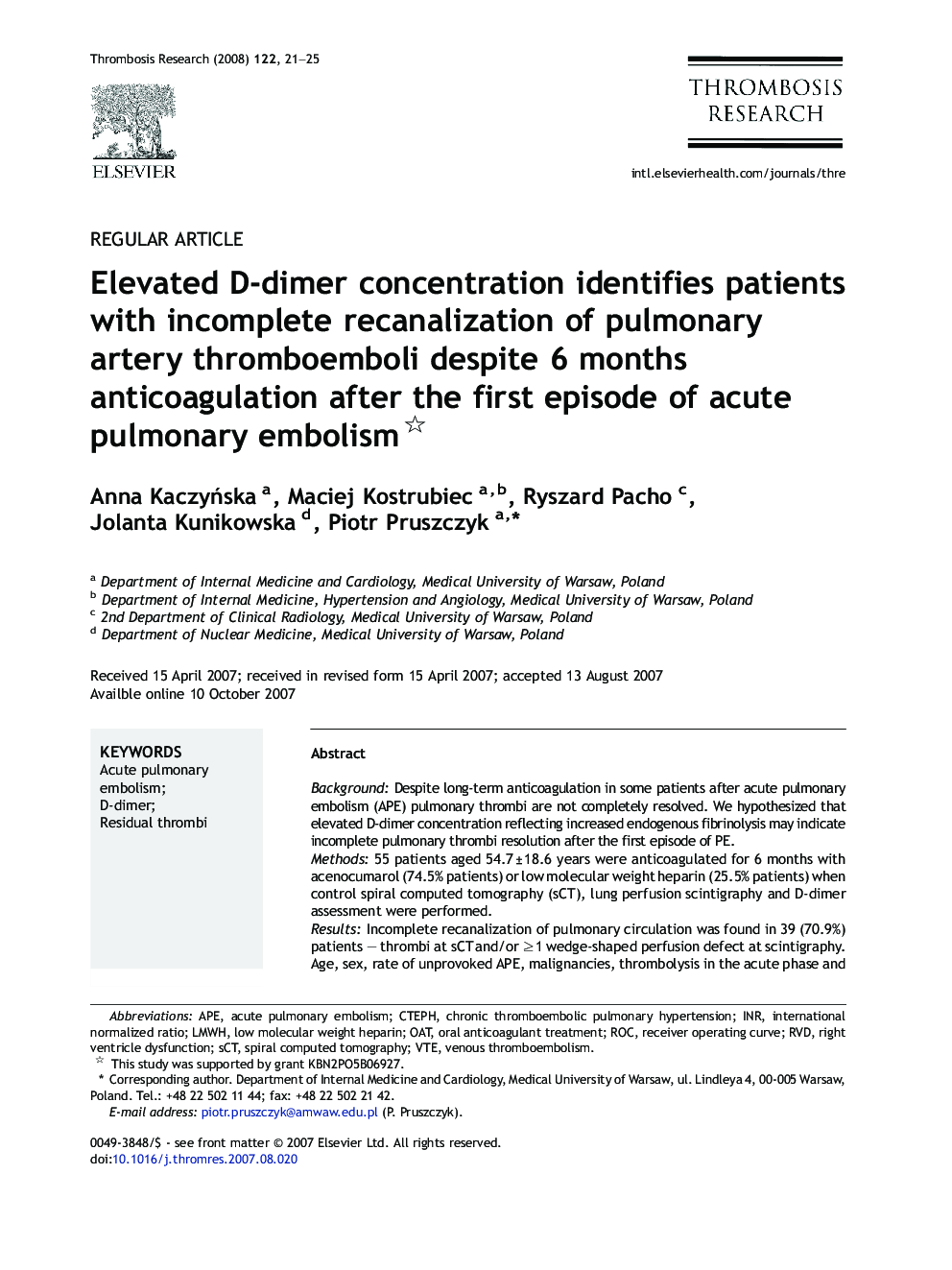| Article ID | Journal | Published Year | Pages | File Type |
|---|---|---|---|---|
| 3029538 | Thrombosis Research | 2008 | 5 Pages |
BackgroundDespite long-term anticoagulation in some patients after acute pulmonary embolism (APE) pulmonary thrombi are not completely resolved. We hypothesized that elevated D-dimer concentration reflecting increased endogenous fibrinolysis may indicate incomplete pulmonary thrombi resolution after the first episode of PE.Methods55 patients aged 54.7 ± 18.6 years were anticoagulated for 6 months with acenocumarol (74.5% patients) or low molecular weight heparin (25.5% patients) when control spiral computed tomography (sCT), lung perfusion scintigraphy and D-dimer assessment were performed.ResultsIncomplete recanalization of pulmonary circulation was found in 39 (70.9%) patients — thrombi at sCT and/or ≥ 1 wedge-shaped perfusion defect at scintigraphy. Age, sex, rate of unprovoked APE, malignancies, thrombolysis in the acute phase and type of long-term anticoagulation were similar in patients without and with complete recanalization. D-dimer at follow-up but not on admission was higher in patients with then without incomplete recanalization (median 340 (80–2280) vs 160 (60–390) ng/mL, p = 0.02). All 11 (20%) patients with D-dimer level > 500 ng/mL at follow-up did not resolve thromboemboli completely. ROC analysis showed that D-dimer at follow-up identified patients with incomplete recanalization (AUC 0.709, 95% CI (0.560–0.831), p = 0.007). Multivariable analysis confirmed that D-dimer > 350 ng/mL at follow-up and right ventricle dysfunction at the diagnosis were independent predictors of incomplete recanalization (OR 18.58 (95% CI 1.97–175.19) and 7.03 (95% CI 1.43–34.6), respectively, p = 0.0006).ConclusionElevated D-dimer after 6 months anticoagulation and right ventricular dysfunction at the diagnosis predict incomplete recanalization of pulmonary circulation after first episode of APE.
